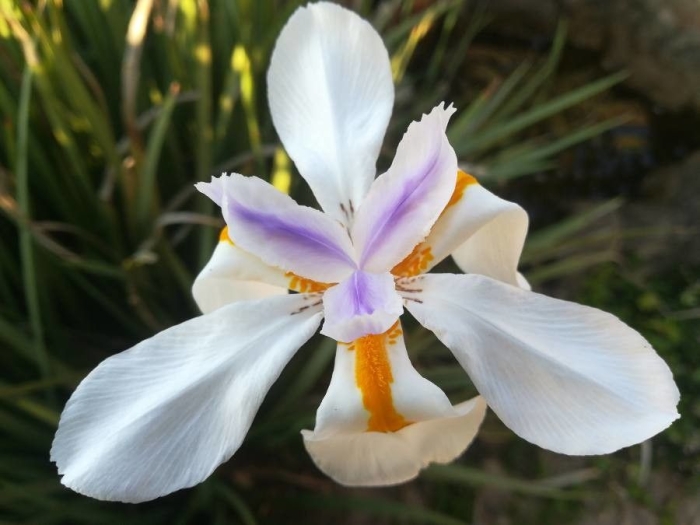African Iris
(Dietes iridioides)
African Iris (Dietes iridioides)
/
/

Manivasan Manivasan Naicker
CC BY-SA 4.0
Image By:
Manivasan Manivasan Naicker
Recorded By:
Copyright:
CC BY-SA 4.0
Copyright Notice:
Photo by: Manivasan Manivasan Naicker | License Type: CC BY-SA 4.0 | License URL: https://creativecommons.org/licenses/by-sa/4.0/ | Attribution: Manivasan Manivasan Naicker (cc-by-sa) | Rights Holder: Manivasan Manivasan Naicker | Publisher: PlantNet | Date Created: 2020-06-07T21:59:59Z | Title: Dietes iridioides (L.) Sweet ex Klatt: flower | Notes: |









































































Estimated Native Range
Summary
Dietes iridioides, commonly known as African Iris, is an evergreen perennial herb native to open woodlands, grasslands, and savannas of Southern and Eastern Africa. It can grow up to 60 cm in height and 30-60 cm in spread, forming dense clumps with a fan-like appearance. The African Iris is characterized by its stiff, sword-shaped leaves and attractive flowers, which are white with yellow and violet markings, and measure 6-8 cm across. The flowers bloom on branched stalks and are quite showy, though each blossom lasts only a few days. After flowering, the plant produces seedpods that can cause the stalks to bend toward the ground, aiding in seed dispersal.
This plant is valued for its drought tolerance and low maintenance requirements, making it a popular choice for water-wise gardens. It is often used in mass plantings, as a ground cover, or in borders. African Iris thrives in full sun to part shade and prefers well-drained soils. While it can tolerate a range of soil types, it performs best in soils with medium to fast drainage. Regular deadheading can encourage more blooms. It is generally pest and disease-free but can be affected by snails and slugs.CC BY-SA 4.0
This plant is valued for its drought tolerance and low maintenance requirements, making it a popular choice for water-wise gardens. It is often used in mass plantings, as a ground cover, or in borders. African Iris thrives in full sun to part shade and prefers well-drained soils. While it can tolerate a range of soil types, it performs best in soils with medium to fast drainage. Regular deadheading can encourage more blooms. It is generally pest and disease-free but can be affected by snails and slugs.CC BY-SA 4.0
Plant Description
- Plant Type:
- Height: 2-4 feet
- Width: 2-3 feet
- Growth Rate: Moderate
- Flower Color: White
- Flowering Season: Spring, Summer, Fall
- Leaf Retention: Evergreen
Growth Requirements
- Sun: Full Sun, Part Shade
- Water: Medium
- Drainage: Fast, Medium
Common Uses
Bee Garden, Border Plant, Butterfly Garden, Deer Resistant, Groundcover, Showy Flowers, Street Planting
Natural Habitat
Open woodlands, grasslands, and savannas of Southern and Eastern Africa
Other Names
Common Names: Fortnight Lily, Morea Iris, Dietes
Scientific Names: , Moraea iridioides, Dietes iridioides, Dietes iridifolia, Ferraria blanda, Iris moriioides, Naron iridioides,
GBIF Accepted Name: Dietes iridioides (L.) Sweet ex Klatt